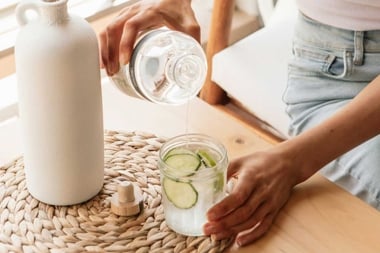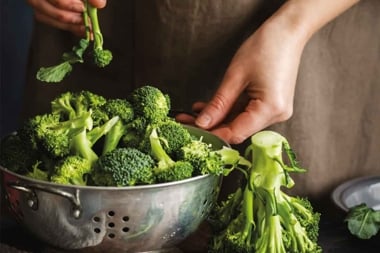Face Down Acne

Are your eating habits written all over your face? If you’ve got acne, this just might be the case. It’s the rare teen who escapes unscathed: acne affects an estimated 85 to 100 percent of teens and young adults in Western countries.
What causes this problem? Physiologically, it’s a combination of three major factors: an overproduction of oil (called sebum), inadequate shedding of skin cells, and bacteria buildup.
Eat the Right Stuff
So, what about food? For 30 years, the official word from the scientific community has been that diet can’t be blamed for acne. Many dermatologists have denied the notion that pizza, chocolate, and pop can make you break out.
But recent studies are challenging that line of thinking. It seems we’re resurrecting the idea that diet can, indeed, affect acne.
A study published in the December 2002 Archives of Dermatology reopened the book on this topic. The researchers examined native populations in New Guinea and Paraguay. In these countries, most people are virtually acne-free. But once they move to the US or Canada, they develop acne.
A dietary link was suggested by the researchers. Their theory was that the average North American’s diet is loaded with high glycemic index (GI) foods, which spike blood sugar levels. This triggers a hormonal cascade, resulting in increased sebum production and, in turn, acne.
The theory was put to the test in an Australian study published in 2005 in Asia Pacific Journal of Clinical Nutrition. The researchers found that, in their study subjects, a low-GI diet appeared to play a role in decreasing the incidence of teen acne.
Further research is needed, but if you want to give a low-GI diet a try, what should you eat?
Stock up on vegetables, fruits, whole grains, beans, and protein from sources such as lean meats and fish. Minimize refined and sugary foods, such as white bread, white rice, doughnuts, and frozen waffles.
Keep It Clean
At the same time, make sure you’ve got the acne basics down. Start by washing your face with a gentle cleanser or mild soap. Don’t overdo it–scrubbing backfires. It can irritate the skin, causing more acne.
Don’t slather makeup over those spots. To keep pores clear, either avoid makeup altogether or stick to the noncomedogenic kind (which doesn’t clog pores). Hair styling products can also clog pores, especially around the hairline, so go easy on these.
Next, ask yourself the question: what’s touching your face? Keep hair clean and pulled away from your face and avoid wearing tight hats. Try not to touch your face too often. Sweat, dirt, and oils can also trigger breakouts.
Finally, as tempting as it is, resist picking or squeezing pimples. You can cause infection and scarring–and who wants that?
Now, let’s say you’re doing all that and you’re still getting acne. Do you just give up? Nope.
Zit Zappers
There’s no shortage of cremes and lotions, but how do you know which are the best? Well, it depends. Everybody’s different, so you may need to experiment a little to find the combination that works for you.
Look for some of the more helpful ingredients. Tea tree oil is a natural antiseptic that may reduce the number of acne lesions. Tea tree oil is readily available in a variety of gels and washes found at health food stores.
Calendula, a marigold-type flower believed to possess anti-inflammatory properties, is another common botanical in natural acne treatments. Witch hazel has long been used in folk medicine as a soothing astringent. Natural clay, formulated in facial masks, may help to unclog pores and clear toxins from your skin.
Okay, got enough ideas? Good. You’re on your way to fresher, clearer skin. Don’t bother wiping the smile off your face.




